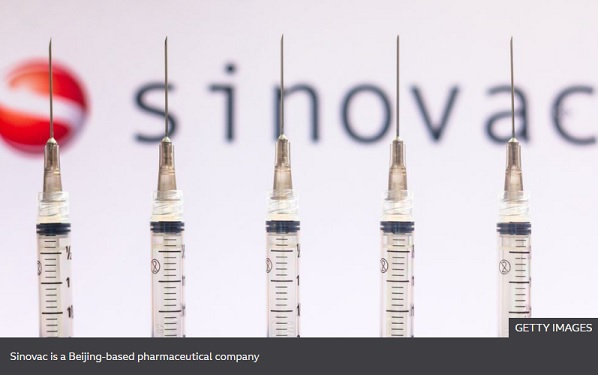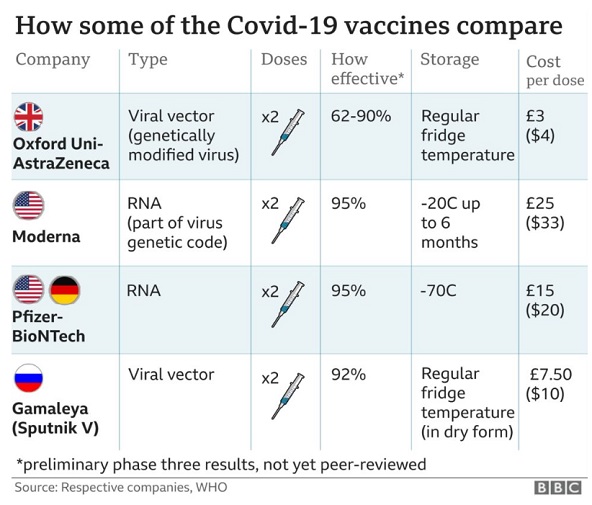
As the global race to produce a Covid-19 vaccine continues, China appears to have made huge strides, with one of its vaccine front-runners, Sinovac, already making its way abroad.
Shipments of Beijing-based biopharmaceutical company Sinovac's Covid-19 vaccine Coronavac have arrived in Indonesia in preparation for a mass vaccination campaign, with another 1.8m doses due to arrive by January.
What's the difference between Sinovac and some other vaccines?
CoronaVac is an inactivated vaccine, which works by using killed viral particles to expose the body's immune system to the virus without risking a serious disease response.
The Moderna and Pfizer vaccines are mRNA vaccines - which means part of the coronavirus' genetic code is injected into the body, triggering the body to begin making viral proteins, but not the whole virus, which is enough to train the immune system to attack.
"CoronaVac is a more traditional method [of vaccine] that is successfully used in many well known vaccines like rabies," Associate Prof Luo Dahai of the Nanyang Technological University told the BBC.
"mRNA vaccines are a new type of vaccine and there is [currently] no successful example [of them] being used in the population," Prof Luo adds.
On paper, one of Sinovac's main advantages is that it can be stored in a standard refrigerator at 2-8 degrees Celsius, like the Oxford vaccine, which is made from a genetically engineered virus that causes the common cold in chimpanzees.
Moderna's vaccine needs to be stored at -20C and Pfizer's vaccine at -70C.
It means that both Sinovac and the Oxford-AstraZeneca vaccine are a lot more useful to developing countries which might not be able to store large amounts of vaccine at such low temperatures.


